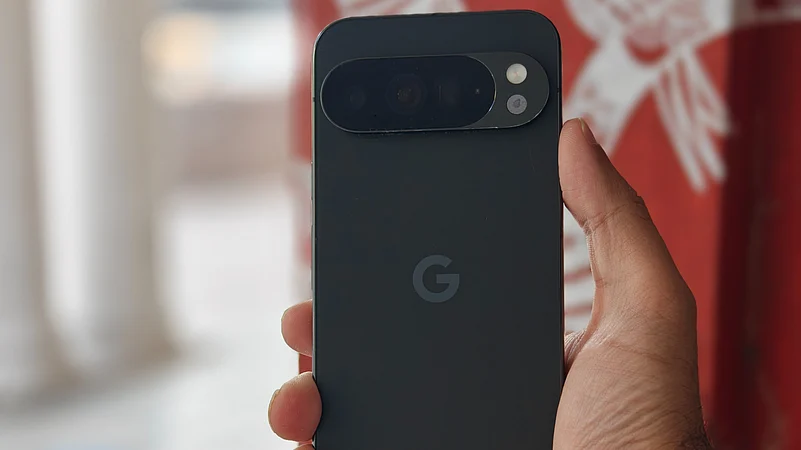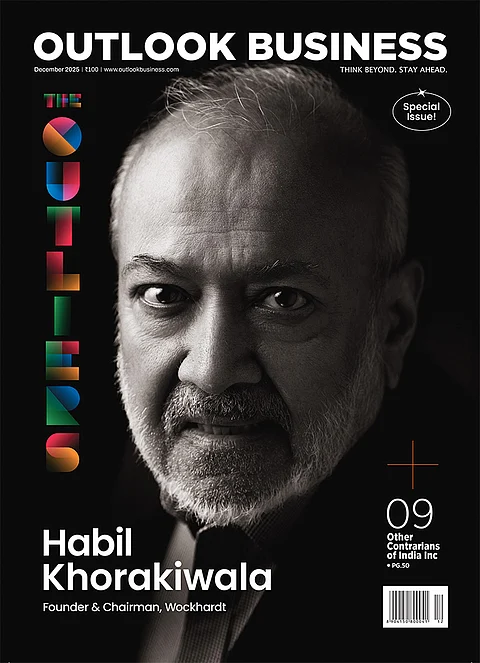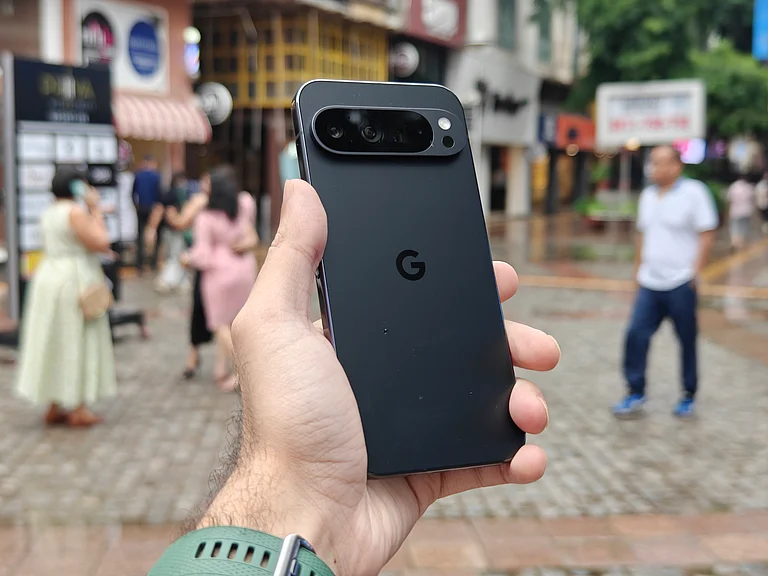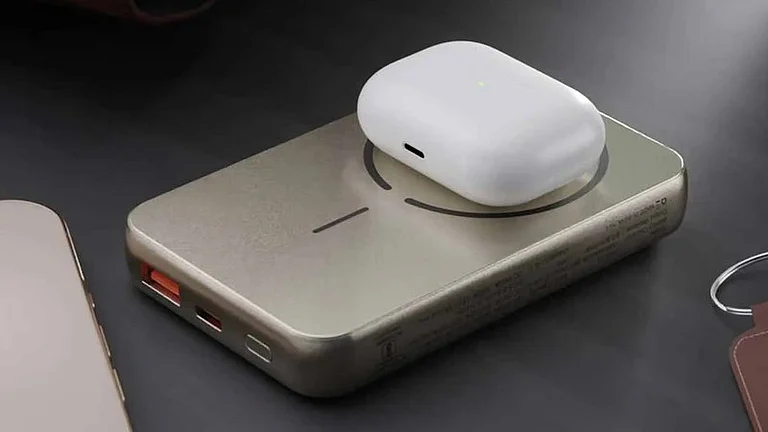I’ve been a fan of Google’s smartphone attempts since the day of the Nexus series. These smartphones were built as a reference point for other Android manufacturers. While the Nexus line of smartphones may rest in peace, we do have a successor, namely the Pixel series. I’ve used every single device since 2016, and they’ve been some of the best Android-based smartphones out there.
Now, they may not be a jack of all trades, but they outdo other smartphones in certain areas with exclusive perks, nifty engineering feats, or software advancements.
It’s been a month or so of using the Pixel 10 Pro XL (from the Pixel 10 Series that launched back in late August, and I just can’t get over the magnets. Pixel calls it Pixelsnap. I’m surprised, but also not surprised, that Google is the first major manufacturer, on the Android side, to offer magnets on its smartphones.
By this, I mean that the Pixel 10 Series now supports Qi 2 and Qi 2.2-based wireless charging. Just like Apple’s MagSafe, you can plonk on a wireless charger and it’ll stay in place thanks to the magnets. All existing Qi 2/Qi 2.2 and MagSafe chargers will work with the Pixel 10 series.
In brief, this technology uses magnets to precisely align charging coils and to deliver faster wireless charging. At the same time, the Pixel 10 and Pixel 10 Pro support Qi2 (15W) wireless charging, the Pixel 10 Pro XL (which I’m using) gets the latest Qi 2.2 (25W) of wireless charging. In anticipation of the launch, I got the Basseus PicoGo AM61 Magnetic Power Bank for review (which will also be covered in a separate article), and this combination makes me happier than ever.
It’s not that I need to use it at all times (unlike iPhone consumers), but it’s the sheer joy and convenience of having fast charging on the go without having to look for an outlet. Even better is the fact that I can move my phone around, like I usually would, without the fear of the power bank just slipping and dropping to the floor.
Basseus was one of the first accessory manufacturers to come out with a Qi2.2 wireless power bank, and it works flawlessly with my Pixel 10 Pro XL. It’s one of the fastest wireless chargers I’ve ever tried. There’s also a built-in 45W USB-C cable (the 10 Pro XL does support 45W wired charging) and a spare 45W USB-C port.
I digress a little, but let’s get back on track. I’m here to talk about the Pixel 10 Pro XL and how it’s become one of my favourite smartphones of 2025.
The Google Pixel Series
Google Pixel smartphones have always been highly discussed. They come with clean (read: stock Android) software, computational photography (yes, they’ve fallen behind some Chinese manufacturers on this front), forward-looking Android features, and competitive hardware (ever since the Pixel 9 Pro XL last year).
The Pixel 10 Pro XL is Google’s largest slab phone. It retains the same 6.8-inch OLED (1344x2922) display from its predecessor (Pixel 9 Pro XL) but gets a bump in the maximum screen brightness from 3,000 to 3,300 nits.
Gorgeous Yet Slightly Hefty Smartphone
The 10 Pro XL is basically identical to the 9 Pro XL on the outside. It’s hard to decipher which is which if you look at them side-by-side. The 10 Pro XL adds a bit of heft, specifically 11g of additional weight. Yes, it’s not a light phone at all, but you can still use it one-handed if you really want to.
I have close to zero to complain about the screen, except for the lack of Dolby Vision certification. It’s a beautiful screen to binge-watch sporting events while on the go. I would advise getting a screen protector as the display scratches easily, which is a shame.
The edges are cleaner, the bezels are symmetrical, and the design is more refined, including the camera bar. It finally feels like Google has nailed the design aspect of the Pixel, albeit they are slated to change it for 2026.
When talking about the subtle design changes, I failed to mention the audio upgrades. There’s a redesigned speaker setup. There are now symmetrical speaker mesh openings on the bottom edge. This is an upgrade over the previous single slot. The SIM card slot has now moved from the bottom edge to the top. This results in a sound that is far superior to that on the 9 Pro XL.
The bass has improved, clarity isn’t compromised, and there’s a deeper and fuller sound coming out of the 10 Pro XL. It’s perfectly good for binge-watching sporting events or browsing through YouTube. For anything more than that, I’d recommend getting a pair of TWS earbuds or headphones.
Let’s circle back to Qi 2.2 wireless charging. With the 10 Pro XL, its beefy 5200mAh (about a 3 percent bump) battery, and the Tensor G5 chipset, the smartphone is well optimised to run longer on a single charge. I’ve had little to no complaints when it comes to battery life. With medium to heavy usage, I can easily get to the next morning without having to charge my phone.
Right now, while writing this review, the 10 Pro XL sits at 77 percent charge. I charged the smartphone to 100 percent, just before leaving home around 12:30 PM. So, in about four hours, the battery life has only decreased by 23 percent, while using the smartphone for a couple of calls, photos, streaming music through Spotify and a whole lot of WhatsApp.
The AI-First Smartphone
Google is fully committing to artificial intelligence (AI) on the Pixel 10 series. Android 16 software has been layered with many AI features, most of which feel polished and genuinely helpful. There’s the Gemini chatbot that is available through the system (including its own stand-alone app). You can use Gemini to see what’s on your screen or camera and ask questions about it.
Then there’s Magic Cue, running in the background, that does all the heavy lifting for you. It helps present context-relevant information by scanning all your Google apps. This information will pop up when you most need it. If someone texts you about a dinner, the message will pop up with the restaurant's location. If you’re on the phone with a recognised business, it’ll show you the location as well.
These features work mostly in Google’s apps, and not in many third-party apps yet. I haven’t been able to test this enough yet, and I’ll have to write another piece on it later, when all the features roll out.
In fact, the 10 Pro XL comes with a year’s worth of subscription to Google AI Pro, which includes a more powerful Gemini model and 2TB of cloud storage.
How Good Is the Tensor G5 Chipset?
The 10 Pro XL is built on TSMC’s 3nm process (whereas previously Samsung manufactured it). I’ll keep this short and just tell you this. Do not expect this smartphone to be good at gaming. Absolutely not. It’s probably the one phone you don’t even want to look at if you’re considering playing games on your smartphone.
For everything else, the Tensor G5 works admirably well. It combines efficiency with the ability to run on-device AI models.
Is It All About the Cameras?
While the camera setup is really good and will suffice for 90 percent of consumers, Chinese companies like Vivo, Oppo, and OnePlus have gained an advantage over Pixel smartphones in still photography.
The AI chops extend to the cameras on the 10 Pro XL as well. The most prominent feature this time around is the Pro Res Zoom (100x). The 10 Pro XL also gets a one-billion-parameter on-device AI model. This is basically for improving and refining the zoom performance on the Pixel 10 Series.
The 10 Pro XL has the same camera system as the 10 Pro, and is mostly similar to its predecessor. There is the 50MP main, 48MP ultra-wide and 48MP 5x telephoto.
What the Pixel smartphones have always succeeded in is having a camera system that everyone can use. Basically, take out your Pixel, point and shoot, and you’re good to go. The photos are almost always worthy of being shared on Instagram and even displayed on a bigger screen.
With the 10 Pro XL, this is no different. Google used to also have an advantage in night photography (with Night Sight), but that edge has disappeared thanks to advancements in hardware and software from the Chinese manufacturers.
With that said, the photos that come out of the 10 Pro XL look vivid, with punchy colours and are clean without any noise. Capturing anything from buildings to cocktails and from people running on the street to a fast moving cat, the 10 Pro XL shines bright. It may not knock your socks off but it’s a reliable camera. You’ll get a great photo almost every time. The bokeh is also subtle and portraits come out beautifully.
The problem I have with the 10 Pro XL is that Google didn’t really go all-out with the hardware. It’s just modest hardware, compared to the competition. In fact, it’s got that same 1/2.55” telephoto sensor that was introduced with the 7 Pro. Lots of Google’s magic is in the post processing and with the help of some AI. If you’re after punchy photos that you can share with all your friends and on social media, then the 10 Pro XL is for you.
This year there are a couple of helpful AI tools - Camera Coach (which I didn’t find very useful), Add Me (blending two photos so that the photographer can also be included in the shot) and Best Take (which is now automatic). The kicker is the Pro Res Zoom, which kicks in beyond the 30x magnification point.
It uses genAI and gives more detail and sharpness into the photo that has been lost due to digital zoom. For the most part it actually did a great job. It doesn’t work on human subjects, but it can have some pretty remarkable results on the occasion.
Is the Pixel 10 Pro XL for You?
As long as you’re not a gamer, the 10 Pro XL is a solid option to consider when you’re buying a new smartphone. The 10 Pro XL hasn’t moved the needle in anyone direction but it keeps chugging along near the top of the pile. It’s a superphone in size, and price, this year, but also in capability.
You get a great camera, a binge-worthy dispXL'sd Material 3 Exbattery pressive haper centthe sofock Android) even more likeable. There are some genuinely cutting-edge AI features that are useful. But, going back to where I began this review; magnets.
Yes, the addition of Qi2.2. Support is the great thing going for the Pixel line of smartphones. If this gets other manufacturers to implement magnets, then I’m all for it. But yes, having convenient access to wireless charging is a boon.
This may not be the revolutionary upgrade you were expecting, since Google switched to TSMC for its Tensor chipset, but its more of an iterative upgrade. Still, I can safely say that the 10 Pro XL is the best Pixel smartphone to date, but probably not the best smartphone of 2025.


































